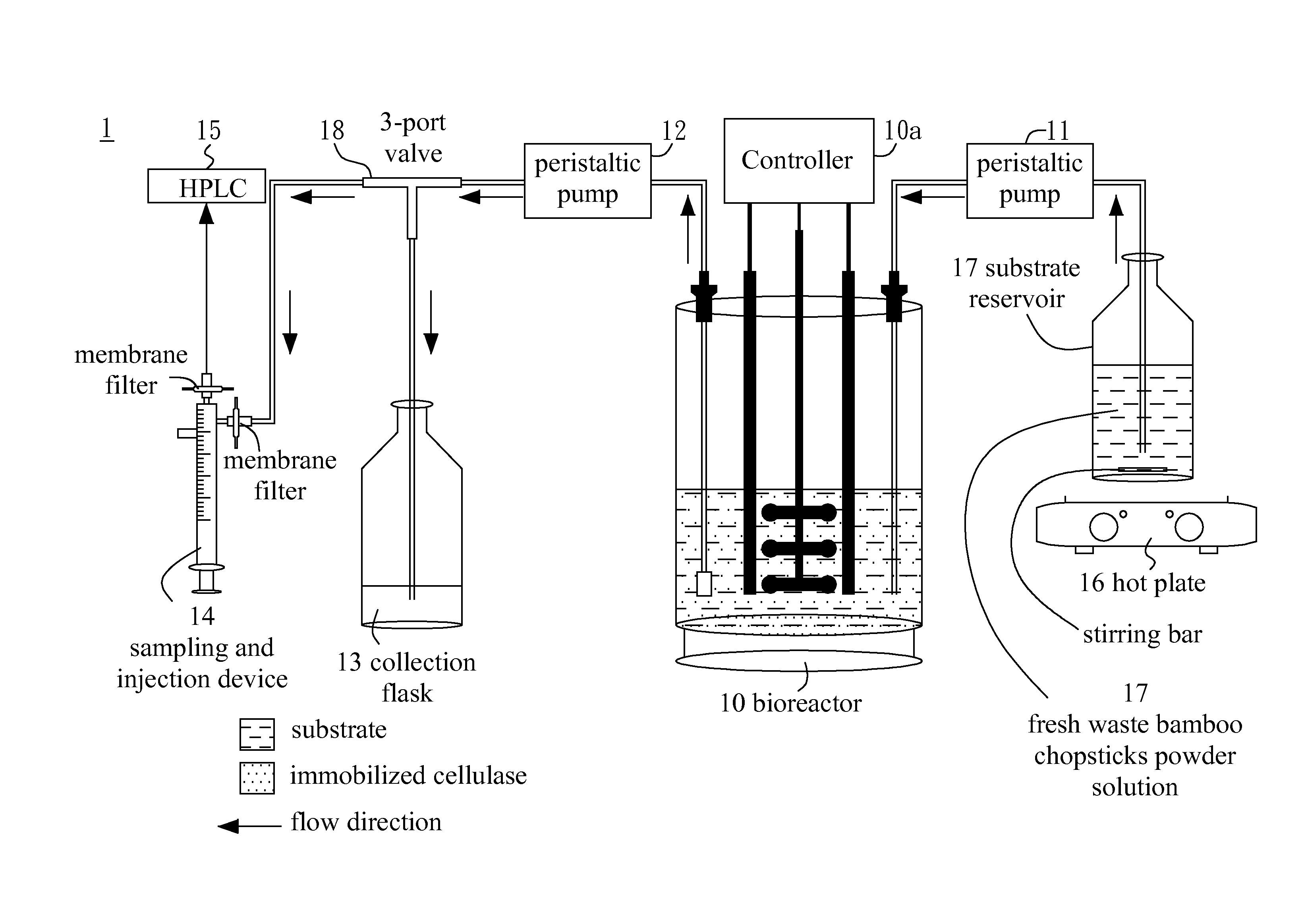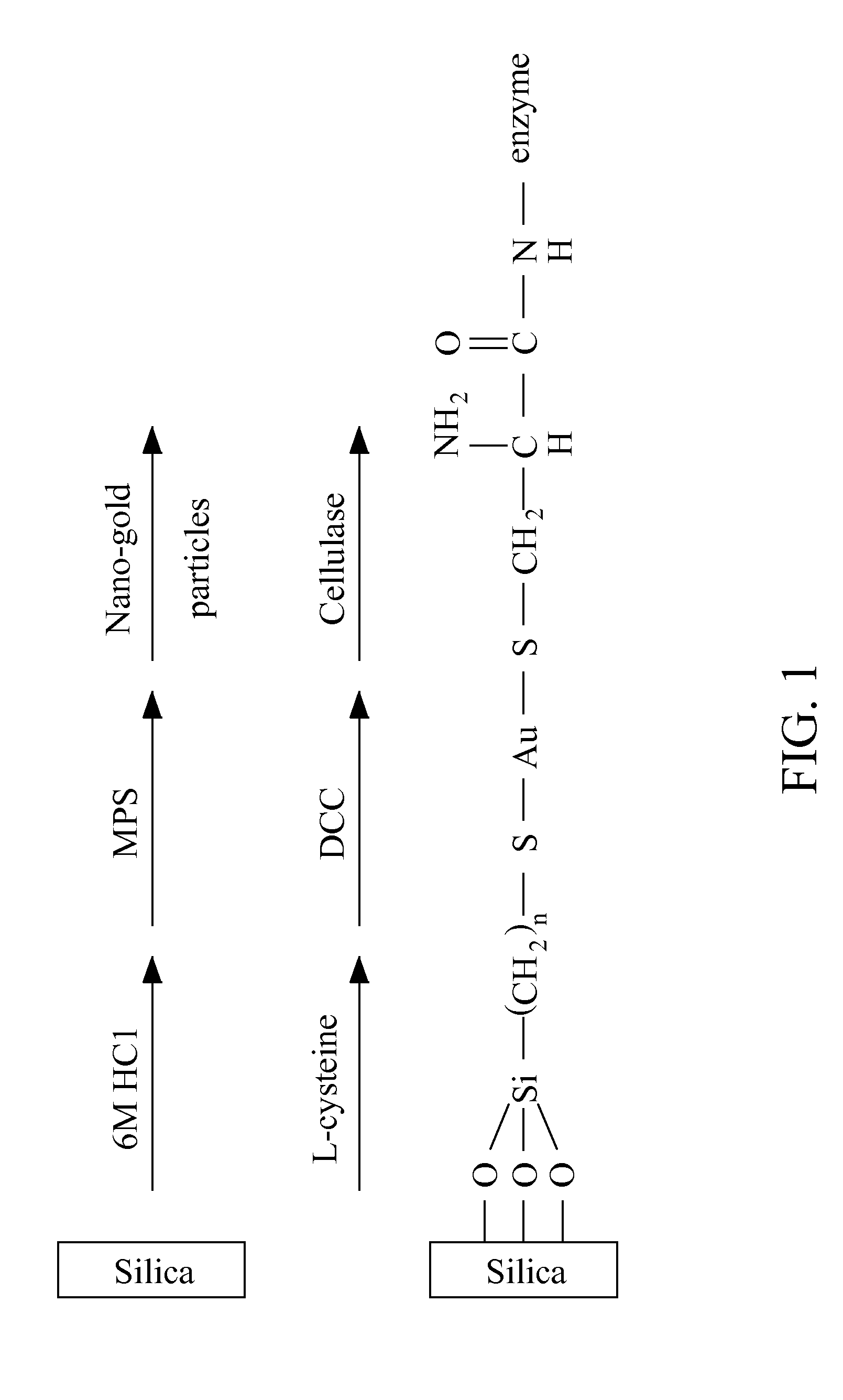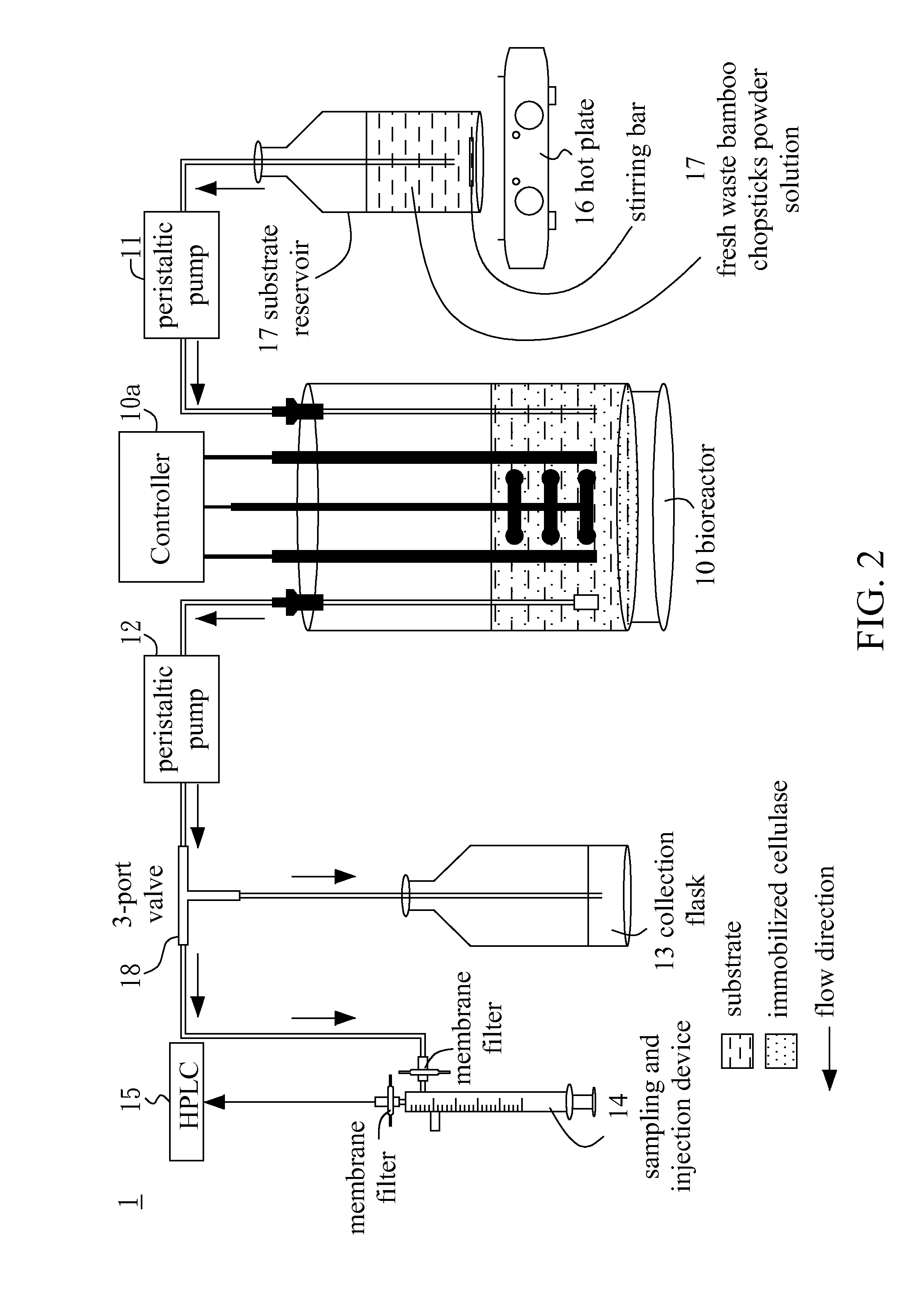Immobilized enzyme and its fabrication method and reaction system
- Summary
- Abstract
- Description
- Claims
- Application Information
AI Technical Summary
Benefits of technology
Problems solved by technology
Method used
Image
Examples
Embodiment Construction
[0017]FIG. 1 shows an immobilized enzyme produced by a method according to an embodiment of this invention. In this preferred embodiment, an enzyme, cellulase, is chemically bonded to silica with the assistance of nano-gold particles and other chemical reagents.
[0018]As shown in FIG. 1, the first step was the silanization of silica. The silica (10.0 g) was first activated with 200 mL 6 M HCl solution by refluxing at 120° C. for 1 day. Then, the activated silica was filtered and cleaned with deionized distilled water until the filtrate is neutral. Then, they were dried at 110° C. for 12 h. One gram of the dried and activated silica was silanized with 10.0 mmol (3-mercaptopropyl) trimethoxysilane (MPS) in 150 mL toluene by refluxing at room temperature for 1 day. The silanized silica was filtered, washed with hot toluene, and dried at 110° C. for 5 h12. In other embodiments, (mercapto)trimethoxysilane ((CH3O)3Si—(CH2)n—SH, wherein n denotes an integer) may replace MPS.
[0019]The second...
PUM
 Login to view more
Login to view more Abstract
Description
Claims
Application Information
 Login to view more
Login to view more - R&D Engineer
- R&D Manager
- IP Professional
- Industry Leading Data Capabilities
- Powerful AI technology
- Patent DNA Extraction
Browse by: Latest US Patents, China's latest patents, Technical Efficacy Thesaurus, Application Domain, Technology Topic.
© 2024 PatSnap. All rights reserved.Legal|Privacy policy|Modern Slavery Act Transparency Statement|Sitemap



